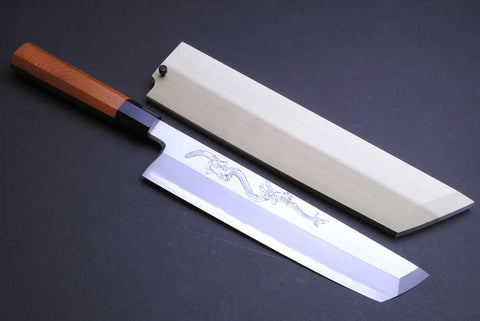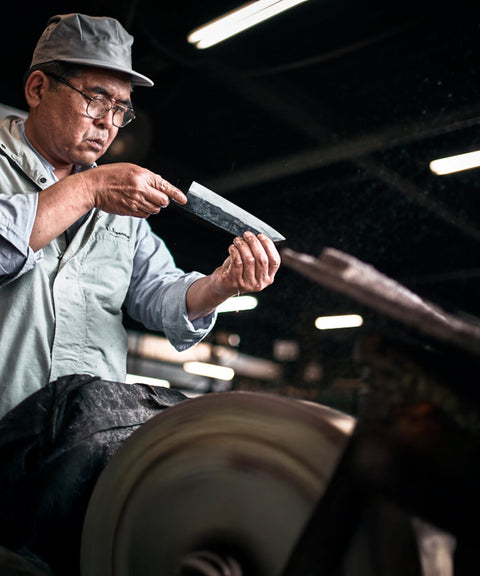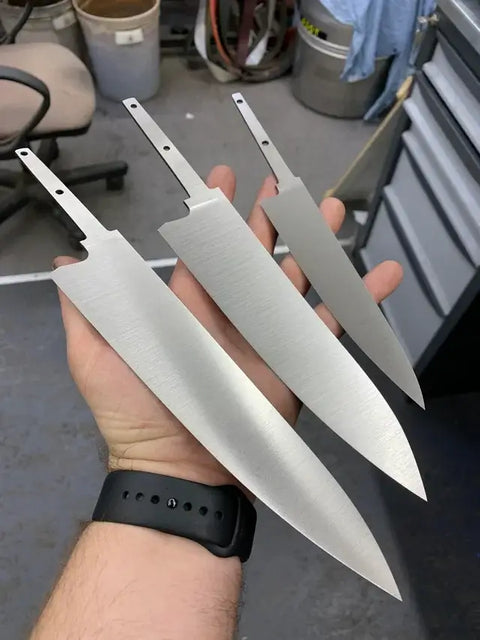
When we talk about Japanese knives , most people think of the classic Gyuto , Santoku or Nakiri . However, there are a wide variety of traditional knives designed for very specific tasks that are not usually as well known outside of Japan. From knives for filleting eels to giant blades used in butchering tuna, in this article we explore the rarest Japanese knives and their unique uses.
1. Unagisaki - The eel knife
This knife is specifically designed to fillet eels efficiently and without damaging their delicate flesh. Its short, sharp blade allows for precise cutting along the spine. Depending on the region in Japan, the shape of Unagisaki may vary slightly, reflecting differences in unagi preparation techniques.
Characteristics:
- Short, stiff blade with a sharp point.
- Ideal for opening eels without tearing the skin.
- There are regional variations such as Kanto-saki and Kansai-saki.

2. Maguro Bōchō - The Giant Tuna Knife
If you've ever seen tuna being filleted at Tsukiji Market, you'll have noticed that the chefs use enormous knives. These are Maguro Bōchō, knives up to 1.5 metres long designed to cut whole tuna in one clean motion.
Characteristics:
- Extremely long leaf, up to 150 cm.
- Requires two people to operate in some cases.
- Used in fish markets and sushi restaurants.

3. Honesuki - The knife for boning poultry
Although in the West, boning poultry is usually done with flexible knives, in Japan the Honesuki is used, which is rigid and has a triangular shape. Its sharpness allows for clean cuts and effortless separation of meat from bones .
Characteristics:
- Short, pointed leaf.
- Asymmetrical edge for greater precision.
- Excellent for cutting joints and removing bones without wasting meat.

4. Menkiri - The noodle cutting knife
In the artisanal production of soba and udon noodles , a knife called a Menkiri is used, which has a wide, straight blade similar to a guillotine. Its function is to cut the noodles in a single, quick, even movement.
Characteristics:
- Wide and completely straight blade.
- Allows for uniform cuts in handmade noodles.
- Common in restaurants specializing in soba and udon.

5. Hamokiri - To cut puffer fish (Fugu)
Pufferfish (fugu) is a dangerous delicacy, as it contains lethal toxins in some parts of its body. For this reason, a special knife called a Hamokiri is required, designed to cut with extreme precision and avoid contaminating the meat with poison.
Characteristics:
- Extremely sharp and thin blade.
- It can only be handled by specially licensed chefs.
- Used in the preparation of the famous Fugu sashimi.

Conclusion
Japanese knives go far beyond the most well-known models. Each knife has a specific purpose and has been crafted over centuries of culinary tradition. Knowing these knives not only broadens our understanding of Japanese cuisine, but also allows us to appreciate the incredible precision and dedication that goes into each cutting tool.
Have you ever heard of any of these knives? Which one did you find most interesting? Leave us your comment and continue exploring the fascinating world of Japanese knives!







